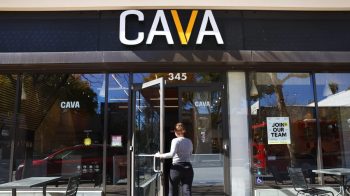Black Monday exposed battle of old, new
TEXT OF STORY
TESS VIGELAND: If your main memories of October 1987 are Baby Jessica, the World Champion Minnesota Twins, and Whitesnake’s “Here I Go Again”. . . You weren’t invested in the stock market. Today marks 20 years since Black Monday — the Crash of October 19th, 1987. A 22 percent drop that rocked markets around the world.
The cause remains a matter of debate. The falling dollar coupled with a slumping bond market . . . Foreign investors fleeing the U.S. market . . . Commentator Chuck Epstein was the managing director of marketing for the New York Stock Exchange at the time. He says that day highlighted a raging battle between the old guard and newer institutional traders.
CHUCK EPSTEIN: Most market commentators who note today’s anniversary of the 1987 stock-market crash will focus on statistics. But that’s a mistake. The crash was much more than a stock market event.
It was really part of a landmark political battle over making long overdue changes to the New York Stock Exchange’s 200-year old trading system. This system needed to accommodate new futures products and strategies, along with electronic trading. The crash also provided a rare public insight into how Wall Street copes with change.
Most investors familiar with Hollywood’s versions of traders and investment bankers think that greed is the dominant force on Wall Street. They’re wrong. The dominant force on Wall Street is inertia. Any major change creates a disproportionate shockwave.
The shockwave which hit Wall Street 20 years ago was about the increasing power of institutional traders. Their interests were not the same as the traders who owned the nation’s futures and stock exchanges. Once exchange members saw that institutional trading meant greater risks and lower commissions, they had to devise an exit strategy. That meant going public, which helps explain why every major player in the 1987 crash, including the NYSE, Chicago Mercantile Exchange and Chicago Board of Trade, are all public companies today.
The crash also had a bright side. It helped individual investors by making lower-cost products, such as exchange-traded funds, stock-index futures and electronic trading, more accessible.
Most importantly, the Crash marked a time when innovation broke through the wall of tradition. But with the first baby boomers entering retirement, there is still a need for less expensive products. For instance, lower-cost annuities would mean more money in the hands of investors, providing boomers with greater retirement income and a more secure investment future. These are changes well worth making.
Innovation still has a critical role to play in today’s financial markets. And we can achieve it without a crash.
VIGELAND: Chuck Epstein is now a financial writer in Folsom, Calif.
There’s a lot happening in the world. Through it all, Marketplace is here for you.
You rely on Marketplace to break down the world’s events and tell you how it affects you in a fact-based, approachable way. We rely on your financial support to keep making that possible.
Your donation today powers the independent journalism that you rely on. For just $5/month, you can help sustain Marketplace so we can keep reporting on the things that matter to you.


















